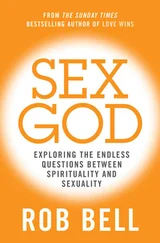It can’t be predicted.
Some particles pass through the glass;
Some don’t.
You can determine possibilities,
you can list all kinds of potential outcomes,
but in the end, that’s the best that can be done.
The physicist Werner Heisenberg was the first to name this disturbing truth about the quantum world: you can measure a particle’s location, or you can measure its speed, but you can’t measure both. Heisenberg’s uncertainty principle, along with breakthroughs from Max Planck and many others, raised countless questions about the unpredictability of the universe on a small scale.
As more and more physicists spent more and more time observing the universe on this incredibly small scale, more truths began to emerge that we simply don’t have categories for, an excellent example of this being the nature of light.
Light is the only constant, unchanging reality—all that curving and bending and shifting happens in contrast to light, which keeps its unflappable, steady course regardless of the conditions. But that doesn’t mean it’s free from some truly mind-bending behavior. Because things in nature are either waves or particles. There are dust particles and sound waves, waves in the ocean and particles of food caught in your friend’s beard. That’s been conventional wisdom for a number of years.
Particles and waves.
One or the other.
Particles are like bullets;
waves are spread out.
Particles can be only in specific locations;
waves can be everywhere.
Particles can’t be divided; waves can.
But then there’s light.
Light is made up of particles.
Light is a wave.
If you Ask light a wave question, it responds as a wave. ask light a particle question, and it reveals itself to be particles.
Two mutually exclusive things, things that have always been understood to be either/or,
turned
out
to
be
both.
At the same time.
Niels Bohr was the first to name this, in 1926, calling it complementarity.
Complementarity, the truth that something can be two different things at the same time, leads us to another phenomenon, one far more bizarre, called entanglement.
Communication as we understand it always involves a signal of some sort—your voice, a telephone, a wire, a radio wave, a frequency, a pulse—something to transmit whatever it is from one place to another. Not so in the subatomic realm, where particles consistently show that they’re communicating with one another with no signal involved. Wolfgang Pauli identified this truly surreal property of subatomic particles in 1925 with his exclusion principle. Pairs of quantum particles, it was discovered, demonstrate an awareness of what the other is doing after they’ve been separated. Without any kind of signal.
The universe in its smallness presents us with a reality we simply don’t have any frame of reference for:
A single electron can do forty-seven thousand laps around a four-mile tunnel—in one second.
Protons live ten thousand billion billion billion years, while muons generally live about two microseconds—and then they’re gone.
If you’re sitting in a chair that spins and I turn you around, I have to turn you 360 degrees to get you facing the same direction again. Electrons have been discovered that don’t return to the front after being spun 360 degrees once; for that to happen you have to spin them twice.
Imagine playing tennis and discovering that sometimes you were able to hit the ball with your racquet, and other times the ball went through your racquet as if there were no webbing. You would immediately assume that there was some reason for this unexpected behavior of the ball and the racquet, and so you would work to figure out why this was happening. You’d take into account speed and force and the characteristics of the various materials: plastic and rubber and metal. All under the assumption that there was an explanation for the ball’s action. You’d apply basic laws of physics and motion, and you’d think about similar circumstances involving similar speeds and sizes and shapes.
You’d be doing what scientists have been doing for a long time: operating under the assumption that the universe functions according to particular laws of motion that can be known.
But in the subatomic world,
things come and go,
disappear and appear,
spin and leap and communicate and demonstrate awareness of each other,
all without appearing to pay any attention to how the world is supposed to work.
Niels Bohr said that anyone who wasn’t outraged on first hearing about quantum theory didn’t understand what was being said.
It’s important to pause here and make it clear that quantum theory is responsible for everything from X-rays and MRI machines and superconducting magnets, to lasers and fiber optics and the transistors that are the backbone of electronics, to computers. It’s staggering just how many features of the modern world as we know it come from the contributions of quantum theory. The Nobel Laureate physicist Leon Lederman and the theoretical physicist Christopher hill of Fermilab believe that quantum theory is arguably the most successful theory in the history of science.
Which is all rather interesting, of course, but I’m assuming by now that you have a question, something along the lines of
What does any of this have to do with what we talk about when we talk about God?
Excellent question.
Three responses, then,
beginning with
energy,
and then moving to
involvement,
and then a bit about
surprise.
Energy,
involvement,
surprise.
Let’s begin with your chair, because odds are that you’re sitting in a chair while you read or listen to this book. It’s probably made of metal or wood, foam, cloth, maybe leather. A few nuts and bolts, a screw or two, some paint, perhaps some nylon or plastic as well. If we were to take that wood or steel or cloth and put it under a high-powered microscope, we would see the basic elements and molecules and compounds that comprise those materials. And if we kept going, farther and farther into those basic materials, we would eventually be at the subatomic level, where we’d discover that the chair, like everything else in the universe, is made of atoms.
And atoms,
it turns out,
are 99.9 percent empty space.
If all of the empty space was taken out of all of the atoms in the universe, the universe would fit in a sugar cube.
An atom, in the end, is a thing. But a thing that is made up mostly of empty space, which is commonly believed to not be a thing. So what exactly are you sitting on?
A chair—a tangible, material, physical object—is made up of particles in motion, bouncing off each other, crashing into each other, coming in and out of existence billions of times in billionths of a second, existing in ghost states and then choosing particular paths for no particular, predictable reason.
Your chair appears to be solid,
but that solidity is a bit of an illusion.
It has weight and mass and shape and texture, and if you don’t see it in the dark and stub your toe on it, that chair will cause your toe great pain, and yet your chair is ultimately
a relationship of energy—
atoms bonded to each other in a particular way that allows you to sit on that chair and be supported. Things like chairs and tables and parking lots and planets may appear to be solid, but they are at their core endless frenetic movements of energy.
I talk about all of this red shifting and dark matter and uncertainty and particle movement because most of us were taught in science class that ours is a hard, stable, tangible world that we can study and analyze because it’s there, right in front of us, and we can prove it in a lab.
Читать дальше












